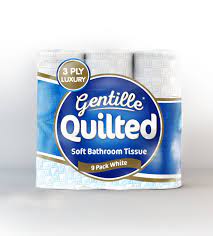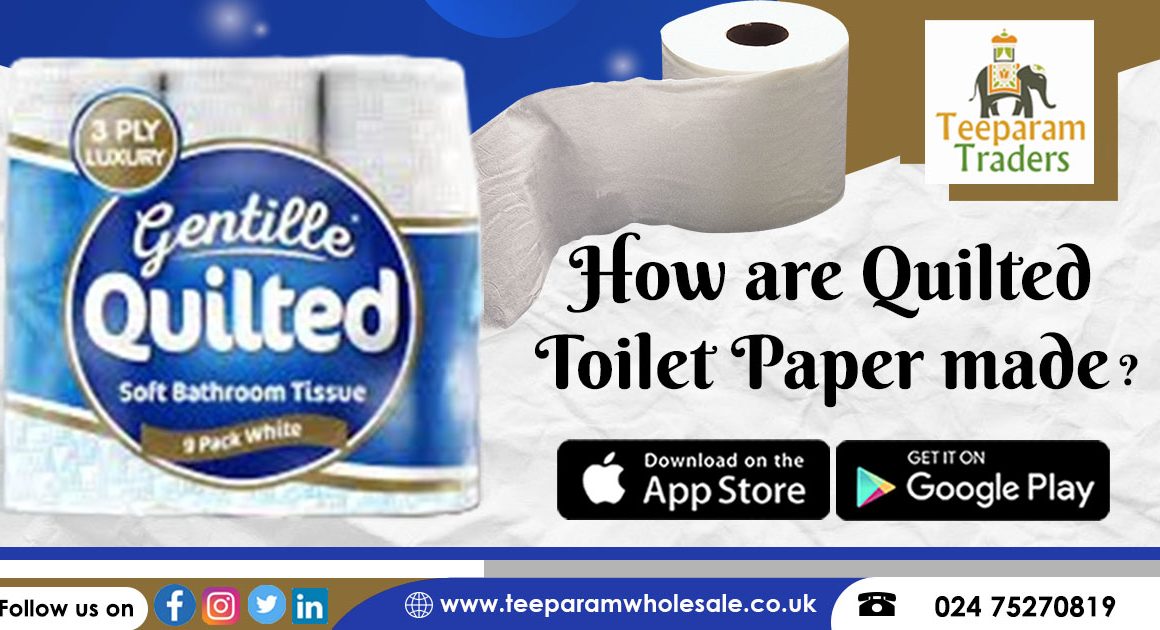Toilet paper, a mundane yet indispensable commodity in our daily lives, has a surprisingly rich and intriguing history. From its humble origins to its modern iterations, the evolution of toilet paper reflects not only advancements in hygiene but also societal changes and technological progress. Moreover, the process of crafting quilted toilet paper, a hallmark of comfort and luxury in the realm of bathroom essentials, embodies the intersection of innovation and consumer demand.
A Brief History
The concept of using paper for personal hygiene dates back centuries, with historical records suggesting that ancient civilizations such as the Chinese, Romans, and Greeks utilized various materials for cleaning purposes. Early iterations included plant leaves, cloth, wool, and even discarded ceramics.
In the 6th century, the Chinese Imperial Court is believed to have used paper for personal hygiene, predating its widespread adoption in the Western world by several centuries. However, it wasn’t until the late 19th century that commercially produced toilet paper became readily available.
Joseph Gayetty, an American inventor, is often credited with manufacturing the first commercial toilet paper in the United States in 1857. Marketed as “Gayetty’s Medicated Paper,” his product was sold in packages of flat sheets infused with aloe, aimed at providing relief for sensitive skin.
The widespread use of toilet paper gained momentum in the early 20th century, with companies such as Scott Paper Company and Kimberly-Clark pioneering its mass production. Initially, toilet paper was simple and unadorned, serving its primary purpose of sanitation.
Enter Quilted Toilet Paper
Quilted toilet paper represents a significant evolution in both comfort and aesthetics within the realm of bathroom tissue. The process of creating quilted toilet paper involves several intricate steps, marrying technological innovation with consumer preferences for softness and durability.
Paper Production
The journey begins with the production of large rolls of tissue paper, typically made from wood pulp or recycled paper fibers. This paper is processed and treated to achieve the desired texture and strength.
Embossing
The tissue paper undergoes embossing, a process that imparts patterns and textures onto the paper sheets. Embossing not only enhances the visual appeal of the toilet paper but The embossing process can help break down the surface fibers of the paper, resulting in a softer and more pliable texture. This enhanced softness is particularly desirable for toilet paper, as it enhances comfort during use.
Ply Bonding
In the case of quilted toilet paper, multiple layers or plies of tissue paper are bonded together. This bonding process enhances the strength and durability of the toilet paper while maintaining its plushness.
Quilting
Quilting is a specialized process used in the production of toilet paper and other tissue products to enhance their softness, strength, and overall quality. Here are more details about the quilting process:
Purpose of Quilting
- Enhanced Softness: Quilting creates a plush and cushiony texture by adding layers of air pockets between the bonded sheets of paper. This results in a softer and more comfortable feel, making the toilet paper gentle on the skin during use.
- Improved Strength and Durability: The quilting process reinforces the structural integrity of the toilet paper by bonding multiple layers of tissue together. This enhances the strength and tear resistance of the paper, preventing it from disintegrating or tearing apart easily.
- Enhanced Absorbency: The air pockets created by quilting increase the surface area of the toilet paper, allowing it to absorb moisture more effectively. This helps ensure thorough cleaning and promotes a more hygienic experience for the user.
Quilting Techniques
Roll-to-Roll Quilting
In this method, large rolls of tissue paper are fed through a quilting machine equipped with engraved rollers or plates. As the paper passes between the rollers, pressure is applied to bond the layers together and create the quilted pattern. The rollers may feature intricate designs or embossed patterns that are transferred onto the paper during the quilting process.
In-line Quilting
In-line quilting is integrated directly into the paper production line, allowing for simultaneous quilting and paper manufacturing. The paper sheet is quilted as it progresses through the production process, eliminating the need for separate quilting machinery and streamlining production.
Custom Quilting Patterns
Manufacturers have the flexibility to create custom quilting patterns tailored to their specific product requirements and branding preferences. Quilting patterns may vary in complexity, density, and design, offering a wide range of aesthetic options for toilet paper products.
Benefits of Quilted Toilet Paper
Luxurious Texture
Quilted toilet paper is prized for its plush and velvety texture, which provides a premium user experience compared to standard toilet paper varieties.
Enhanced Comfort
The soft and cushiony feel of quilted toilet paper makes it particularly well-suited for sensitive skin, reducing irritation and discomfort during use.
Aesthetic Appeal
The quilted pattern adds visual interest and sophistication to the toilet paper, elevating its appearance and enhancing the overall bathroom decor.
Perforation and Cutting
Once the quilting process is complete, the paper is perforated and cut into individual sheets or rolls, ready for packaging and distribution.
Gentille Quilted Bathroom Tissues
Gentille Quilted Bathroom Tissues” is a premium brand of toilet paper renowned for its luxurious softness, strength, and superior quality. Crafted with meticulous attention to detail, Gentille Quilted Bathroom Tissues offer an unparalleled bathroom experience that combines comfort and sophistication.
Each sheet of Gentille Quilted Bathroom Tissues features a distinctive quilted pattern, meticulously pressed onto layers of premium tissue paper. This intricate quilting process not only enhances the visual appeal of the toilet paper but also creates air pockets within the sheets, resulting in a softer and more absorbent product.

Gentille Quilted Bathroom Tissues are designed to provide the ultimate in comfort and convenience. The perforated sheets tear off effortlessly, ensuring a seamless and hassle-free experience for users. Whether used for everyday hygiene routines or special occasions, Gentille Quilted Bathroom Tissues elevate the standard of luxury in the realm of bathroom essentials.
Indulge in the sumptuous softness and exquisite craftsmanship of Gentille Quilted Bathroom Tissues, where every detail is crafted with your comfort in mind. Experience the epitome of refinement with Gentille Quilted Bathroom Tissues – the perfect blend of elegance and functionality for discerning individuals who demand nothing but the best.
In Conclusion, The history of toilet paper is a testament to human ingenuity and our relentless pursuit of comfort and cleanliness. From its ancient origins to the advent of quilted luxury, toilet paper has evolved into an indispensable staple of modern living.
Quilted toilet paper, with its plush texture and intricate design, exemplifies the marriage of functionality and indulgence in everyday essentials. As consumer preferences continue to evolve, so too will the innovations in toilet paper production, ensuring that comfort and hygiene remain paramount in the realm of bathroom essentials for generations to come.
Where to buy Quilted Toilet Papers In the United Kingdom?
If you are residing in the United Kingdom and looking to buy any popular Quilted Toilet Paper brands, Teeparam Traders carries a large range of toilet papers, tissues and other household items from all over the globe and offers their customers to buy these household items at the lowest prices no matter if you are a wholesaler or retailer through their website.
With excellent customer service, and with their very versatile payment options Teeparam Traders always makes it the number one choice in the UK for all your tissues and other household needs.



